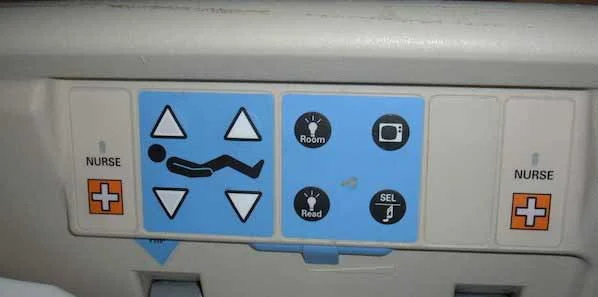During the first 24 hours after a stroke, attention to detail such as hospital bed positioning is critical to patient outcomes. Bed position is amongst the complex issues discussed in a Medlink Neurology article which summarises the latest research on caring for ischaemic stroke patients.
Most strokes are ischaemic, meaning they are caused by blood clots that block blood flow to the brain. Sitting upright is not advisable as it decreases blood flow and oxygen to the brain just when the brain needs more blood. It is reasonable to keep stroke patients lying flat or as nearly flat as possible, according to the report authored by Loyola University Medical Center neurologist Murray Flaster, MD, PhD and colleagues.
However, as the authors noted, strokes also can increase intracranial pressure (brain swelling) that can damage the brain. Sitting upright helps improve blood drainage and reduce intracranial pressure, but at a cost of reduced blood flow to the brain. “There are few data to guide decision making in this difficult situation,” Dr. Flaster's team said.
Further complicating stroke care, some patients have orthopnea (difficulty breathing while lying flat). In such patients, the head of the bed should be kept at the lowest elevation the patient can tolerate. Meanwhile, frequent changes in body position, regardless of head position, may help patients tolerate lying flat, while also minimising the risk of bed sores, the authors added.
The following stroke care issues also can affect outcomes:
Other stroke care issues discussed in the Medlink Neurology report include: blood pressure management; blood volume; blood clots; statin therapy; heart attack and other cardiac problems; management of complications such as pneumonia and sepsis; infection; malnutrition and aspiration; brain swelling; seizures; brain haemorrhages; and recurrent stroke.
The Loyola authors cited studies showing that hospital units that specialise in stroke care reduce mortality, increase the likelihood of being discharged to home and improve functional status and quality of life.
Worldwide, 15 million people have a stroke each year and nearly six million people die. Every six seconds, someone dies from a stroke. Thus, the World Stroke Organization has designated 29 October "World Stroke Day" to promote public awareness of the world's high stroke risk and stroke prevalence.
Dr. Flaster is a stroke specialist and an associate professor in the Department of Neurology of Loyola University Chicago Stritch School of Medicine. Co-authors are Sarkis Morales-Vidal, MD, assistant professor; Michael Schneck, MD, professor; and Jose Biller, MD, professor and chair, all in the Department of Neurology.
Source: Newswise.com
Image Credit: Google Images
Most strokes are ischaemic, meaning they are caused by blood clots that block blood flow to the brain. Sitting upright is not advisable as it decreases blood flow and oxygen to the brain just when the brain needs more blood. It is reasonable to keep stroke patients lying flat or as nearly flat as possible, according to the report authored by Loyola University Medical Center neurologist Murray Flaster, MD, PhD and colleagues.
However, as the authors noted, strokes also can increase intracranial pressure (brain swelling) that can damage the brain. Sitting upright helps improve blood drainage and reduce intracranial pressure, but at a cost of reduced blood flow to the brain. “There are few data to guide decision making in this difficult situation,” Dr. Flaster's team said.
Further complicating stroke care, some patients have orthopnea (difficulty breathing while lying flat). In such patients, the head of the bed should be kept at the lowest elevation the patient can tolerate. Meanwhile, frequent changes in body position, regardless of head position, may help patients tolerate lying flat, while also minimising the risk of bed sores, the authors added.
The following stroke care issues also can affect outcomes:
- Hyperglycaemia: There is considerable evidence of a link between high blood sugar and poor outcomes after stroke. The authors recommend strict blood sugar control, using frequent finger-stick glucose checks and aggressive insulin treatment, regardless of whether the patient has a known history of diabetes.
- Body temperature: For each single degree C increase in the body temperature of a stroke patient, the risk of death or severe disability more than doubles. Therapeutic cooling has been shown to help cardiac arrest patients, and clinical trials are underway to determine whether such cooling could also help stroke patients. Until those trials are completed, the goal should be to keep normal temperatures (between 95.9 and 99.5 degrees F).
Other stroke care issues discussed in the Medlink Neurology report include: blood pressure management; blood volume; blood clots; statin therapy; heart attack and other cardiac problems; management of complications such as pneumonia and sepsis; infection; malnutrition and aspiration; brain swelling; seizures; brain haemorrhages; and recurrent stroke.
The Loyola authors cited studies showing that hospital units that specialise in stroke care reduce mortality, increase the likelihood of being discharged to home and improve functional status and quality of life.
Worldwide, 15 million people have a stroke each year and nearly six million people die. Every six seconds, someone dies from a stroke. Thus, the World Stroke Organization has designated 29 October "World Stroke Day" to promote public awareness of the world's high stroke risk and stroke prevalence.
Dr. Flaster is a stroke specialist and an associate professor in the Department of Neurology of Loyola University Chicago Stritch School of Medicine. Co-authors are Sarkis Morales-Vidal, MD, assistant professor; Michael Schneck, MD, professor; and Jose Biller, MD, professor and chair, all in the Department of Neurology.
Source: Newswise.com
Image Credit: Google Images
Latest Articles
blood clot, ischemic stroke, neurology, blood pressure, bed
During the first 24 hours after a stroke, attention to detail such as hospital bed positioning is critical to patient outcomes. Bed position is amongst the...










